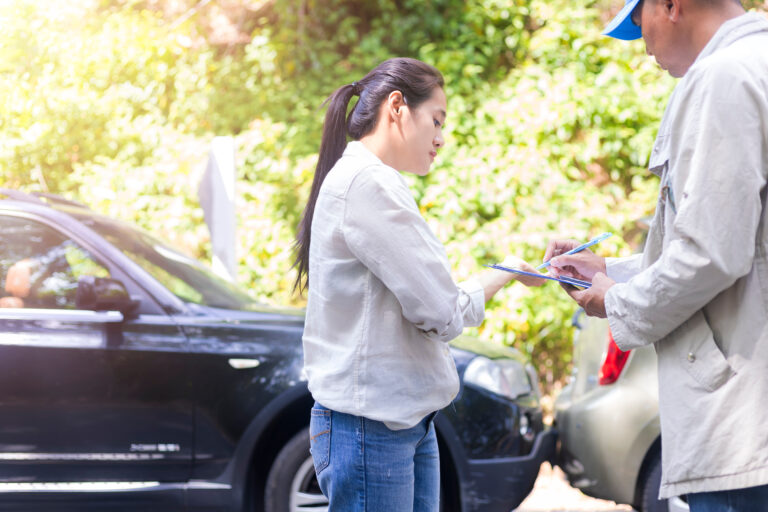In Virginia, there is no statewide law that prohibits or permits riding bicycles on sidewalks. Instead, local ordinances govern this issue. For example, in Richmond, the city code prohibits riding bikes on sidewalks in business districts but allows it in residential areas. This means that what is legal in one city may be illegal in another. If you are interested in finding out if you can ride a bike on a sidewalk in Virginia, you are in the right place.
It’s essential to check the local laws of the area where you plan to ride. If you’re unsure, contact the local police department or city hall for clarification. Remember, ignorance of the law is not a defense, and violating local ordinances can result in fines or other penalties.
At The Johnson Injury Firm, our bicycle accident attorney can help you better understand the law and how liability works if you are involved in an accident.
Safety Considerations for Sidewalk Riding
Even where sidewalk riding is legal, it may not always be safe. Sidewalks are designed for pedestrians, and riding a bike on them can pose risks to both cyclists and walkers. Potential hazards include:
- Limited Visibility: Drivers may not expect cyclists to emerge from sidewalks, especially at intersections or driveways.
- Pedestrian Conflicts: Sharing narrow sidewalks with pedestrians can lead to collisions.
Obstacles: Sidewalks often have uneven surfaces, utility poles, or other obstructions that can cause accidents.
For these reasons, many safety experts recommend riding in the street, using designated bike lanes when available. If you must ride on the sidewalk, always yield to pedestrians, ride at a safe speed, and be extra cautious at intersections.
Virginia’s Bike Helmet Laws
Virginia does not have a statewide helmet law for bicyclists. However, several localities have enacted their helmet ordinances, particularly for minors. For instance, in Fairfax County, children under 15 are required to wear helmets while riding bicycles. Failing to comply with these local laws can result in fines and, more importantly, an increased risk of injury.
Regardless of legal requirements, we strongly recommend that all cyclists wear helmets. According to the National Highway Traffic Safety Administration, helmets are 85% effective in reducing the risk of head injuries. Protecting your head is one of the simplest and most effective ways to stay safe while cycling.
Top Bike Trails in Virginia
Virginia offers a plethora of scenic and well-maintained bike trails suitable for riders of all levels. Here are some notable ones:
Virginia Capital Trail
This 51.7-mile paved trail connects Richmond to Jamestown, offering a scenic route through Virginia’s historic landscapes. It’s ideal for both casual riders and serious cyclists. The trail is well-maintained and features amenities like rest areas and informational signage.
Virginia Creeper Trail
Stretching 34 miles from Abingdon to Whitetop Station, this trail is renowned for its beautiful mountain scenery and gentle grades. It’s a favorite among families and recreational riders. The trail passes through the town of Damascus, known as “Trail Town USA,” which hosts the annual Appalachian Trail Days Festival.
High Bridge Trail State Park
Located in Southside Virginia, this 31-mile trail features the historic High Bridge, which spans the Appomattox River. The trail’s flat terrain makes it accessible for riders of all ages and skill levels.
Washington and Old Dominion Trail
This 44.7-mile trail runs through Northern Virginia, from Shirlington to Purcellville. It’s a popular commuter route and offers a mix of urban and rural landscapes. The trail is paved and includes separate lanes for cyclists and pedestrians in certain sections.
Legal Implications of Bicycle Accidents
If you’re involved in a bicycle accident in Richmond or anywhere else in Virginia, it’s essential to understand your legal rights. Virginia follows a “contributory negligence” rule, meaning that if you’re found even partially at fault for the accident, you may be barred from recovering damages. This strict standard underscores the importance of adhering to all traffic laws and safety guidelines.
As experienced Richmond bicycle accident lawyers, we at The Johnson Injury Firm can help navigate the complexities of your case. Whether you’re dealing with insurance claims, gathering medical documentation, or pursuing legal action, our team is here to provide guidance and support.
Tips for Safe Cycling in Virginia
To minimize risks and ensure a safe riding experience, consider the following tips:
- Know Local Laws: Familiarize yourself with the biking regulations in your area, including sidewalk riding and helmet requirements.
- Use Designated Bike Lanes: Whenever possible, ride in bike lanes or on trails designed for cyclists.
- Be Visible: Wear bright clothing and use lights or reflectors, especially when riding at dawn, dusk, or night.
- Stay Alert: Avoid distractions like headphones or mobile devices while riding.
- Signal Intentions: Use hand signals to indicate turns or stops to other road users.
- Maintain Your Bike: Regularly check your bike’s brakes, tires, and gears to ensure they’re in good working condition.
Frequently Asked Questions About Biking Laws in Virginia
Are electric bikes allowed on sidewalks in Virginia?
Electric bike (e-bike) laws in Virginia vary depending on the class of the bike and the locality. Generally, Class 1 and Class 2 e-bikes (pedal-assisted and throttle-assisted, respectively) are treated similarly to traditional bicycles and may be permitted on sidewalks, unless restricted by local ordinances.
However, Class 3 e-bikes, which can reach speeds of up to 28 mph, are usually prohibited on sidewalks due to safety concerns. Always check with local authorities before riding an e-bike on the sidewalk.
Do I need a license or registration to ride a bicycle in Virginia?
No. You do not need a driver’s license, vehicle registration, or insurance to ride a bicycle in Virginia. However, cyclists must still obey traffic signals, yield to signs, and follow other road rules, just like motor vehicles do.
Is it legal to ride a bike at night in Virginia?
Yes, but Virginia law requires specific equipment for night riding. Cyclists must have a white front light visible from at least 500 feet and a red rear reflector or light visible from at least 600 feet. These requirements are designed to increase visibility and reduce the risk of nighttime accidents.
Can cyclists ride two abreast on Virginia roads?
Yes, Virginia law permits cyclists to ride two abreast, but not more if it impedes the normal flow of traffic. On narrow roads or in heavy traffic, it’s safer and more courteous to ride single file.
What is the statute of limitations for filing a bicycle accident lawsuit in Virginia?
In Virginia, the statute of limitations for filing a personal injury lawsuit, such as one stemming from a bicycle accident, is two years from the date of the accident. This means you have two years to file a lawsuit against the at-fault party. If you miss this deadline, the court will likely dismiss your case, and you may lose your right to seek compensation for medical bills, lost wages, pain and suffering, and other damages.
Are cyclists required to use hand signals?
Yes. Under Virginia law, cyclists must use hand signals to indicate turns and stops when riding on the roadway. Proper signaling not only helps avoid accidents but also makes cyclists more predictable to motorists.
Understanding the Law: Can You Ride a Bike on a Sidewalk in Virginia?
Navigating Virginia’s biking laws can be complex, but understanding them is essential for your safety and legal protection. While sidewalk riding is permitted in some areas, it’s often safer to use designated bike lanes or trails. Always wear a helmet, even if not legally required, and stay informed about local regulations.
If you or a loved one has been involved in a bicycle accident, don’t hesitate to contact The Johnson Injury Firm. Our experienced bike accident attorneys in Richmond are here to help you understand your rights and pursue the compensation you deserve.





